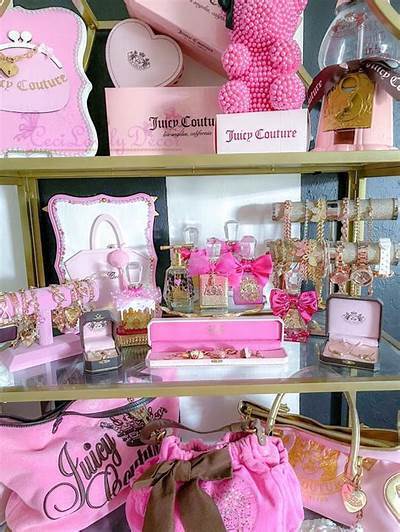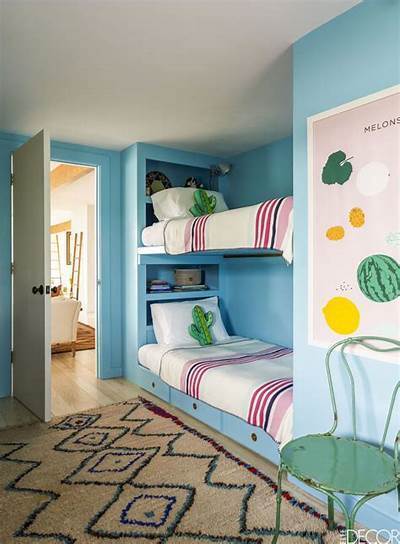Kids' Bedroom Decor: Creating a Dream Space
A child's bedroom is more than just a place to sleep; it's their sanctuary, their creative hub, and a reflection of their personality. Designing a kid's bedroom requires careful consideration of their age, interests, and needs, balancing functionality with fun and creating a space that fosters imagination and growth. This comprehensive guide will walk you through every aspect of kids' bedroom decor, from choosing a theme to selecting the perfect furniture and accessories.
Choosing a Theme: Unleashing Imagination
Selecting a theme is a great starting point. It provides a cohesive direction for your design choices and allows you to personalize the room to your child's unique preferences. Consider your child's interests when choosing a theme. Do they love animals, space, superheroes, fairies, or perhaps something completely unique? Here are a few popular themes to inspire you:
Popular Theme Ideas:
- Under the Sea: Shades of blue, green, and teal, combined with ocean-themed accessories like starfish, seashells, and coral, create a calming and imaginative underwater world.
- Space Explorers: Darker blues and blacks accented with bright stars, planets, and rocketships transport your child to distant galaxies.
- Enchanted Forest: Earthy tones, whimsical woodland creatures, and fairy lights create a magical and peaceful atmosphere.
- Superhero Headquarters: Bold primary colors, superhero imagery, and personalized elements like a cape rack or a secret hideaway will thrill any young superhero.
- Rainbow Bright: A burst of color, incorporating all the colors of the rainbow, creates a vibrant and cheerful environment.
- Safari Adventure: Earthy tones, animal prints, and safari-themed accessories evoke the thrill of an African adventure.
Remember, the theme doesn't have to be overly literal. You can incorporate elements subtly through color palettes, artwork, and accessories, creating a cohesive look without being overwhelming.
Furniture Selection: Comfort and Functionality
Choosing the right furniture is crucial for both functionality and aesthetics. Consider your child's age and needs when selecting furniture pieces. For younger children, consider safety features like rounded edges and sturdy construction. For older children, incorporate furniture that promotes organization and independence.
Essential Furniture Pieces:
- Bed: The centerpiece of the room, choose a bed that is comfortable, safe, and age-appropriate. Consider a loft bed to maximize space or a trundle bed for guests.
- Wardrobe/Closet System: Provide ample storage space for clothes and belongings. Consider built-in wardrobes or modular systems that can grow with your child.
- Desk/Study Area: Create a designated space for homework and creative activities. Choose a desk with adequate space and comfortable seating.
- Shelving: Open shelving provides a great way to display books, toys, and decorative items, while also promoting organization.
- Seating: Include comfortable seating options like a beanbag chair, armchair, or floor cushions for relaxation and reading.
When selecting furniture, consider materials that are durable, easy to clean, and age-appropriate. Avoid sharp corners and unstable pieces, prioritizing safety and comfort.
Color Palette and Wall Decor: Setting the Mood
The color palette plays a significant role in setting the overall mood and atmosphere of the room. Consider the theme and your child's personality when choosing colors. For younger children, brighter, more playful colors are often preferred, while older children might appreciate more sophisticated and calming hues.
Color Considerations:
- Neutrals: Cream, beige, and gray provide a versatile backdrop that can be easily accented with brighter colors.
- Pastel Shades: Soft pinks, blues, greens, and yellows create a calming and gentle atmosphere.
- Bold Colors: Red, orange, and yellow add energy and vibrancy to the room.
- Accent Walls: Using a bold color or pattern on one wall can add visual interest without overwhelming the space.
Wall decor adds personality and visual interest to the room. Consider artwork, posters, wall stickers, or even a chalkboard wall to encourage creativity and self-expression. Personalize the space with photos, drawings, and handmade crafts.
Lighting and Textiles: Creating Ambiance
Lighting is essential for creating a functional and comfortable space. Layer lighting with a combination of ambient, task, and accent lighting to create a warm and inviting atmosphere. A bedside lamp provides task lighting for reading, while overhead lighting illuminates the entire room. Consider incorporating fairy lights or string lights for a magical touch.
Textile Choices:
- Bedding: Choose bedding that is comfortable, soft, and matches the overall theme of the room. Consider using a duvet cover to easily change the look of the bed.
- Curtains: Curtains add warmth and privacy to the room. Choose curtains that are age-appropriate and coordinate with the overall decor.
- Rugs: Rugs define the space and add warmth and comfort underfoot. Choose a rug that is easy to clean and durable enough to withstand daily wear and tear.
- Throw Pillows and Blankets: Add texture and personality with throw pillows and blankets in coordinating colors and patterns.
Pay attention to the texture and feel of textiles. Soft, plush materials can create a cozy and inviting atmosphere, while natural fabrics like cotton and linen offer a more relaxed and airy feel.
Storage Solutions: Organization and Tidiness
Keeping a child's bedroom organized is a constant challenge. Invest in storage solutions that are both functional and aesthetically pleasing. Consider using baskets, bins, shelves, and drawers to keep toys, clothes, and books organized and easily accessible.
Storage Ideas:
- Under-bed storage: Maximize space by using under-bed storage containers for out-of-season clothes or toys.
- Wall-mounted shelves: Utilize vertical space with wall-mounted shelves to display books and decorative items.
- Toy chests: A large toy chest provides a designated space for storing toys and keeps the floor clear.
- Labeled bins and baskets: Use labeled bins and baskets to organize toys and other items, making it easy for children to put things away.
Personal Touches and DIY Projects: Adding Personality
Incorporate personal touches to make the room truly unique. Display your child's artwork, photos, and handmade crafts. Encourage creativity by including a dedicated area for arts and crafts. DIY projects are a great way to personalize the space and involve your child in the design process. Consider painting a mural, creating personalized wall hangings, or making custom pillowcases.
DIY Ideas:
- Personalized wall decals: Create custom wall decals with your child's name or favorite characters.
- Hand-painted furniture: Give old furniture a new look with a fresh coat of paint.
- Fabric bunting: Create colorful bunting to add a festive touch to the room.
- DIY headboard: Build a unique headboard using reclaimed wood or fabric.
Remember, the key to creating a successful kids' bedroom is to balance functionality, aesthetics, and your child's personality. Involve them in the design process, listen to their preferences, and create a space that they will love and cherish for years to come.


この記事へのコメント